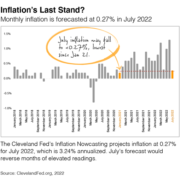President Biden Announces Plan to Cancel Student Debt
Ahead of another deadline on the restart of payments for America’s $1.7 trillion in federal student loans, President Joe Biden on Wednesday, 8/24/22 announced a plan to cancel debt for a subset of Americans and continue to keep a pandemic-era pause on the repayments — a sweeping move he has openly weighed in some form or another since his time as a candidate.
“In keeping with my campaign promise, my Administration is announcing a plan to give working and middle class families breathing room as they prepare to resume federal student loan payments in January 2023,” Biden wrote in a Twitter post.
Pell Grant recipients can qualify for up to $20,000 in debt forgiveness as part of Wednesday’s broader announcement on student loan forgiveness. Other student loan borrowers who don’t have Pell Grants will still have loans forgiven up to $10,000, as has been previously reported.
Both forgiveness options are for people who earn less than $125,000 per year, or $250,000 as a household. According to the White House, Biden will give remarks Wednesday at 2:15 p.m. in the Roosevelt Room.
Biden’s social media post also announced an extension of the pause on student loan payments through Dec. 31, 2022 — the final extension — a move that’s intended to give time for the transition back to repayment. Follow link to read more: Biden unveils plan to forgive student loan debt for a subset of Americans (msn.com)Follow link to read more.https://www.msn.com/en-us/news/politics/biden-unveils-plan-to-forgive-student-loan-debt-for-a-subset-of-americans/ar-AA111x5j





